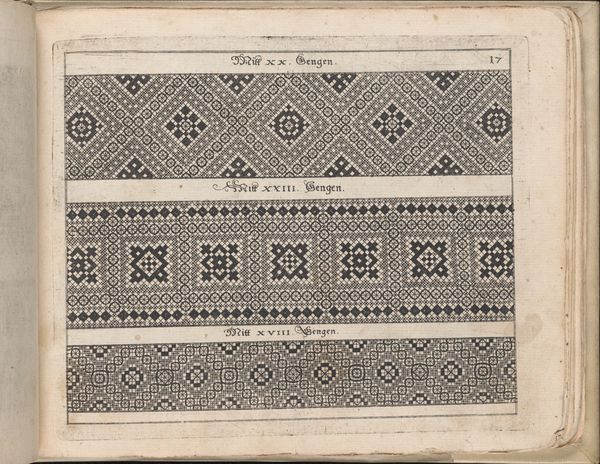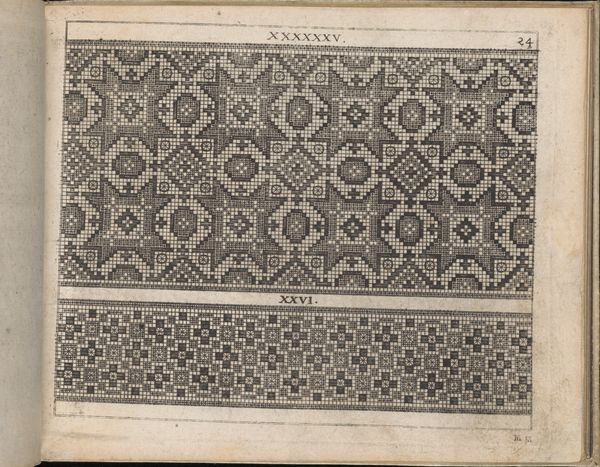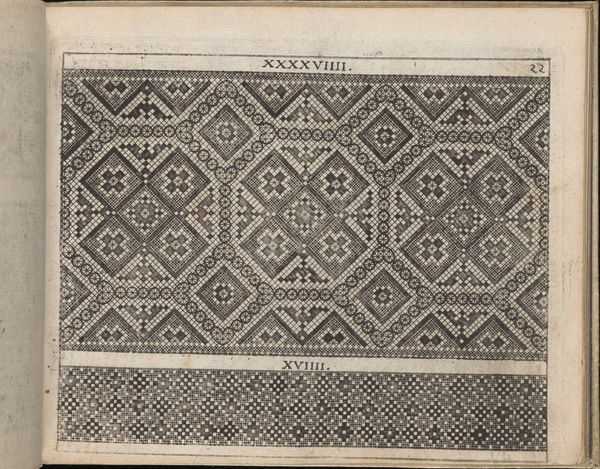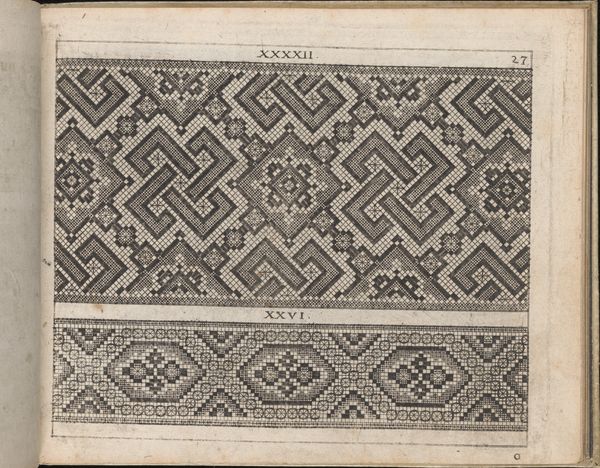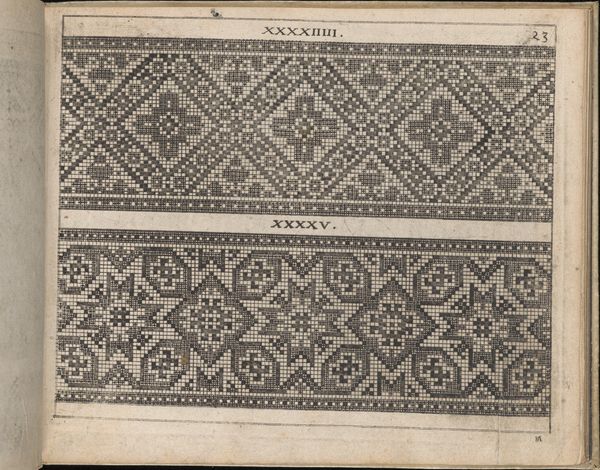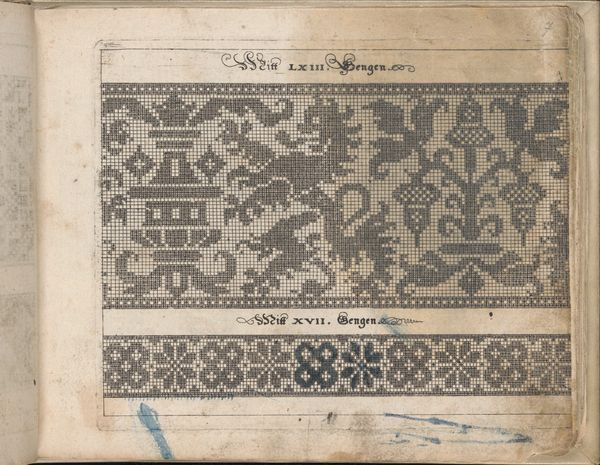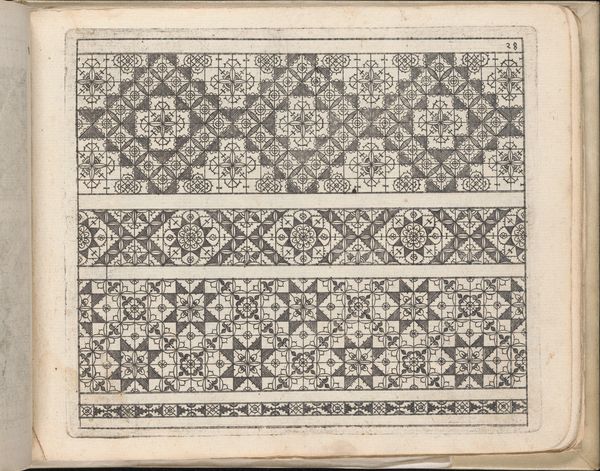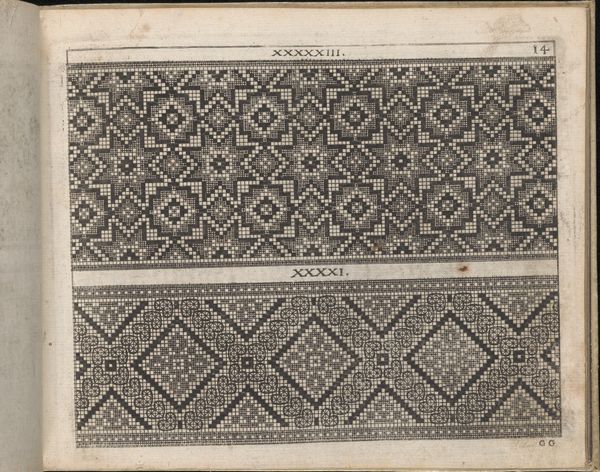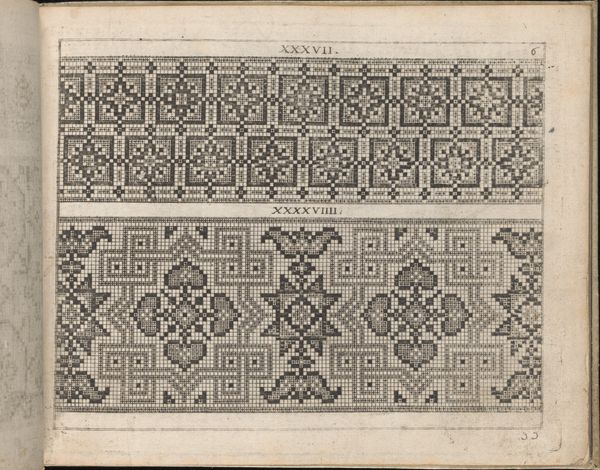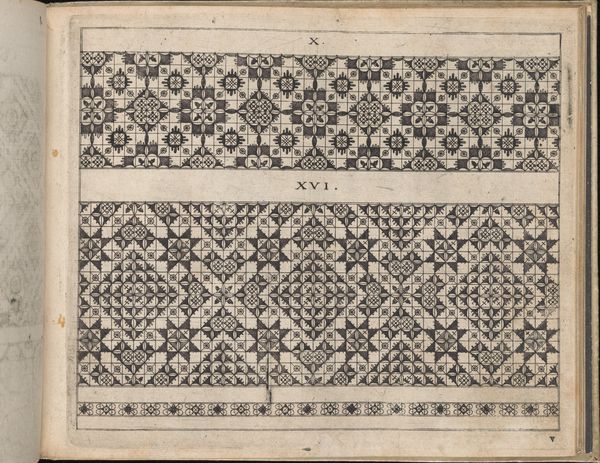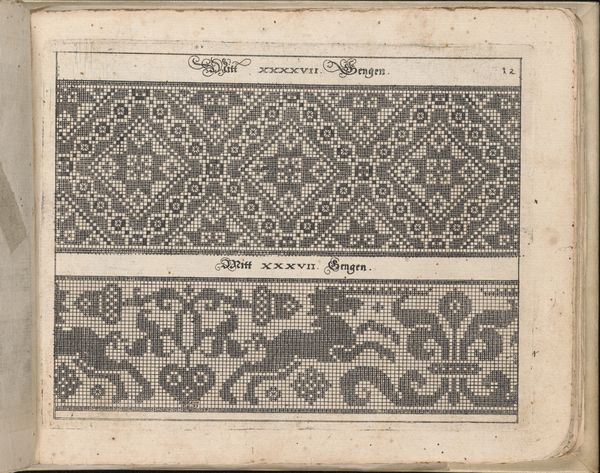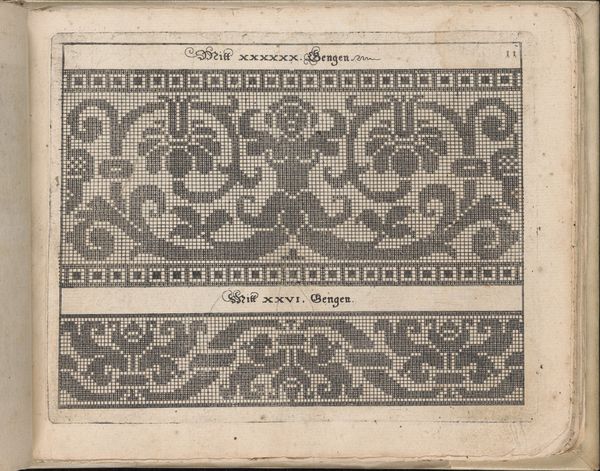
drawing, ornament, print, woodcut
#
drawing
#
ornament
# print
#
book
#
woodcut
#
northern-renaissance
Dimensions: Overall: 6 1/8 x 7 13/16 in. (15.5 x 19.8 cm)
Copyright: Public Domain
Editor: So, this is "Schön Neues Modelbuch (Page 28 recto)" from 1597 by Johann Sibmacher, currently housed at the Metropolitan Museum of Art. It’s a woodcut, right? It kind of reminds me of early computer graphics because of all the pixelated squares. How fascinating, looking at such precise ornamentation, almost like the DNA of design... what leaps out at you when you look at this page? Curator: You know, DNA of design, I love that! To me, it whispers tales of craftsmanship and domestic life in the Northern Renaissance. Imagine ladies gathered around, squinting at this page, meticulously copying these patterns for their embroidery or lace work. Each square represents a stitch, a breath, a tiny act of creation within a woman’s sphere. Do you see how the geometric patterns both repeat and evolve, creating this sense of rhythm? Editor: I do! It’s almost meditative to look at. But why a book? Why not just pass the patterns around? Curator: Ah, that's where the print element comes in! The printing press made these designs accessible beyond court circles, fostering creativity amongst the growing middle class. But look closer at the individual motifs... notice anything about them? Editor: They’re all based on geometric shapes, especially squares, circles, and diamonds. Very architectural, I think? Curator: Exactly! Reflecting the era's fascination with classical forms, but translated into these accessible patterns. Sibmacher wasn’t just providing patterns, he was sharing a design language, of sorts, enabling anyone to engage with Renaissance aesthetics on a personal scale. What would you say if someone asked you if this counts as art? Editor: Definitely art. Functional, yes, but also a window into a world, a mindset, a creative spark. Looking at this makes me realize how much history can be packed into something seemingly simple, just geometric ornaments printed on a page. Curator: Agreed! It reminds us that even the most "minor" arts offer profound insights. Now I need to rethink what 'minor arts' mean altogether!
Comments
No comments
Be the first to comment and join the conversation on the ultimate creative platform.
